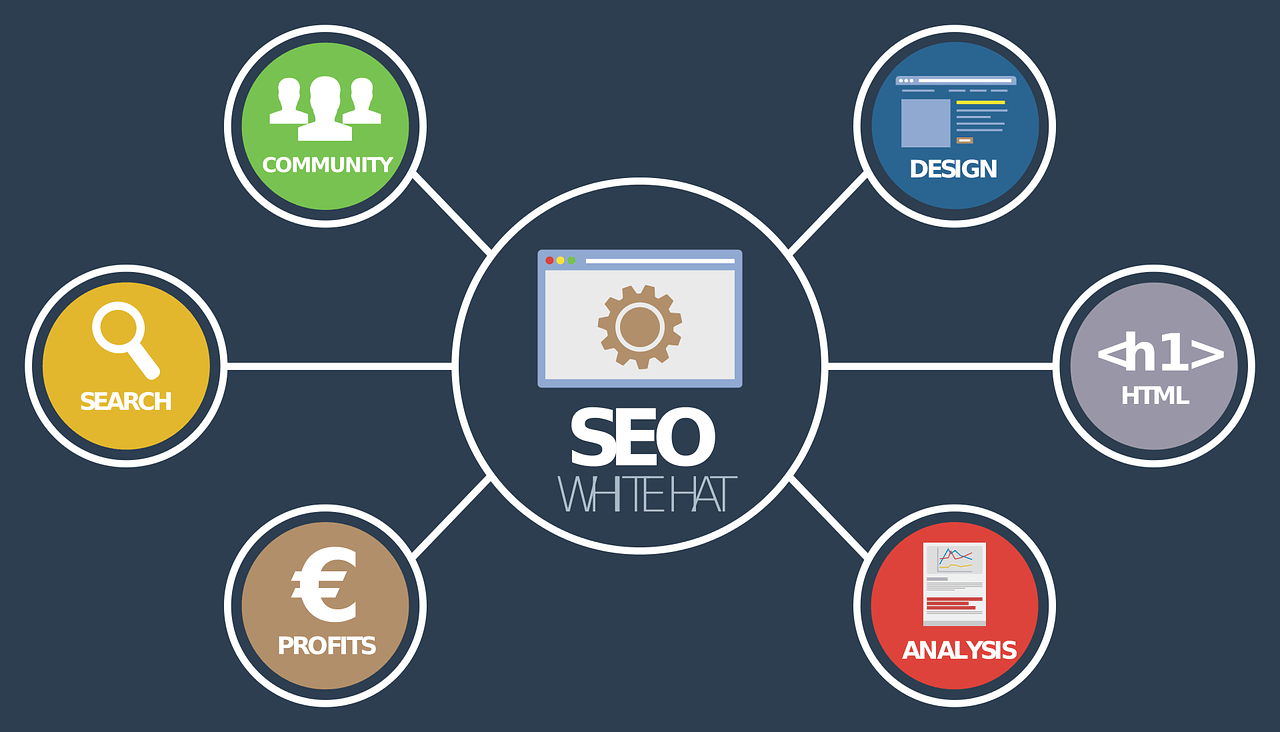What Does SEO Mean?


SEO stands for “search engine optimization.” It is the process of optimizing a website or online content to improve its visibility and ranking in search engine results pages (SERPs).
The main goal of SEO is to increase the quantity and quality of traffic to a website through organic search engine results. This is achieved by improving the website’s relevance and authority, as well as making sure that it is easily crawlable and understandable by search engines.
There are many different factors that contribute to a website’s visibility in search results. Some of the most important include:
- Keyword research: Identifying the keywords and phrases that people are using to search for products or services like yours.
- On-page optimization: Making sure that the content on your website is optimized for the keywords you’ve identified. This includes things like meta tags, header tags, and image alt tags.
- Content creation: Creating high-quality, relevant content that will attract links and social shares.
- Link building: Acquiring links from other websites to your own. This helps to establish your website’s authority and credibility in the eyes of search engines.
SEO is a constantly evolving field, as search engines are constantly updating their algorithms to improve the search results for their users. As a result, it is important to stay up-to-date with the latest best practices and trends in order to stay competitive in search engine results.
Additionally, SEO is not just limited to text content, It also includes video, images, podcasts and other forms of multimedia. Optimizing these types of content can also help to improve a website’s visibility in search results.
It’s important to note that SEO is not a one-time task, it’s an ongoing process. This means that even after a website is optimized, it is still necessary to monitor and maintain the website’s search engine ranking to ensure that it continues to drive traffic to the site.
What are Some Examples of SEO?


- Keyword research and optimization: Identifying and incorporating relevant keywords into the website’s content and meta tags to improve search visibility.
- On-page optimization: Optimizing website structure, internal linking, and other technical elements to improve the user experience and search engine rankings.
- Content creation and marketing: Creating high-quality, informative content that targets specific keywords and phrases to attract organic traffic.
- Link building: Acquiring backlinks from authoritative websites to increase the website’s authority and search engine rankings.
- Social media marketing: Promoting the website and its content on social media platforms to increase visibility and drive traffic.
- Local SEO: Optimizing the website and local listings to target specific geographic areas and improve visibility for local searches.
- Mobile optimization: Ensuring that the website is optimized for mobile devices to improve the user experience and search engine rankings.
- Google My Business optimization: Optimizing the business listing on Google My Business to improve visibility in local search results.
- Video optimization: Optimizing video content for search engines by adding relevant keywords, meta tags, and transcripts.
- Analyzing and tracking: Using analytics tools to track website performance and make data-driven decisions to improve search engine rankings over time.
What is an SEO strategy?


An SEO strategy is a plan of action that businesses and website owners use to improve their search engine rankings and visibility. The goal of an SEO strategy is to increase the number of organic traffic to a website, which in turn can lead to more leads and sales. SEO, or search engine optimization, is a way to optimize a website so that it can be easily found by search engines like Google, Bing, and Yahoo.
There are many different aspects of an SEO strategy, and it can be overwhelming for businesses and website owners to know where to start. However, it is important to understand that an SEO strategy is not a one-time fix, but rather a continuous process that requires ongoing effort and monitoring.
Keyword Research: One of the first steps in creating an SEO strategy is to conduct keyword research. This involves identifying the keywords and phrases that your target audience is searching for, and then incorporating those keywords into your website’s content and meta tags. This will help search engines understand what your website is about, and will increase the chances of your website appearing in search results when those keywords are used.
Technical SEO: Another important aspect of an SEO strategy is to ensure that your website is technically sound. This includes making sure that your website is mobile-friendly, that it loads quickly, and that it is easy to navigate. Search engines take these factors into consideration when determining search rankings, so it is important to make sure that your website is technically sound before focusing on other aspects of your SEO strategy.
Link Building: One of the most important aspects of an SEO strategy is link building. Link building is the process of getting other websites to link back to your website. The more links that point to your website, the more authoritative it will appear to search engines. This can lead to higher search rankings and more visibility for your website.
Social Media: Social media is another important aspect of an SEO strategy. By promoting your website on social media, you can increase the number of links pointing to your website. This can help increase your search rankings and visibility.
Content Marketing: Content marketing is also an important aspect of an SEO strategy. By creating high-quality, relevant content that is useful to your target audience, you can increase the number of people visiting your website. This can help increase your search rankings and visibility.
Monitoring: Finally, an SEO strategy should include monitoring and reporting. This includes monitoring your search rankings, website traffic, and conversion rates. By monitoring these metrics, you can identify areas where your SEO strategy is working well and areas where improvements are needed. This will allow you to make changes to your SEO strategy as needed in order to achieve your goals.
What are SEO Tools?


SEO (Search Engine Optimization) tools are software or online platforms that are designed to help website owners and marketers improve their website’s visibility and ranking in search engine results pages (SERPs). Some common types of SEO tools include:
- Keyword research tools: These tools help identify the most relevant keywords and phrases for a website’s content, allowing marketers to optimize their website’s content and meta tags for search engines.
- Backlink analysis tools: These tools help identify and analyze the backlinks (links pointing to a website) that a website has, which can help improve its visibility and ranking.
- Website audit tools: These tools scan a website and provide a report on any issues that may be negatively impacting the website’s visibility and ranking, such as broken links, missing meta tags, or duplicate content.
- Rank tracking tools: These tools track the website’s ranking for specific keywords and phrases, allowing marketers to see how their SEO efforts are impacting their website’s visibility.
- Social media management tools: These tools help manage and track social media profiles and campaigns, which can also have an impact on a website’s visibility and ranking.
- Content optimization tools: These tools help create and optimize the website’s content, ensuring it is keyword-rich and optimized for search engines.
Why is SEO so Good?
SEO (Search Engine Optimization) is considered good because it helps to increase the visibility and ranking of a website on search engines like Google, Bing, and Yahoo. By optimizing the website’s content, structure, and technical elements, it makes it easier for search engines to understand and index the website’s content. This in turn leads to higher search engine rankings, increased website traffic, and ultimately, more leads and sales. Additionally, SEO is considered good because it is a cost-effective way to drive targeted traffic to a website and can have a long-term impact on a business’s online presence.
In conclusion, an SEO strategy is a plan of action that businesses and website owners use to improve their search engine rankings and visibility. It involves keyword research, technical optimization, link building, social media, content marketing, and monitoring and reporting. An SEO strategy is a continuous process that requires ongoing effort and monitoring in order to achieve the best results. By following these steps, businesses and website owners can increase their search rankings and visibility, leading to more leads and sales.










